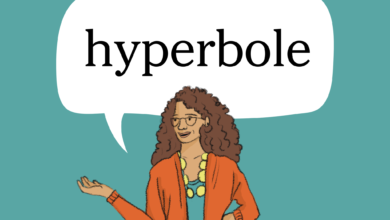AI and IOBNT in Education

In biological manner of life we can see different situations that can connect you into the physical artificial intelligence human mind. Audio, vision, and all physical and mental processes. As connecting human mind to the Quantum computers and other Artificial Intelligence with Synthetic Biology. Every day we use more digital devices rather than before. Synthetic-Biology (SB genomic design) can help us to take the control of ourselves and others for better life style.
Quantum Education
Education will happen anywhere and anytime. It is time to rethink Education Globally and personally. Strategies of Teaching and Learning can give us a hint for advance learning to get through education in all the times for everyone base on their needs with utilization of AI.
Testing in IOBNT
With the recent advances in electronics, it is now possible to fabricate smaller and cheaper devices with low power – high capacity communication capabilities, which are connected and are able to autonomously interact with each other forming a network of physical devices called, the Internet of Things (IoT). This concept is taken one more step ahead with novel studies in nanotechnology enabling nanoscale computing devices based on nanomaterials such as graphene and metamaterials, called Nano-things (Bige Deniz Unluturk, 2020). the Internet of Nano-Things is the basis for many future applications requiring very tiny, concealable, and non-intrusive things (I. F. Akyildiz and J. M. Jornet, 2010). Thanks to synthetic biology, we can engineer living cells as biosensor devices and thanks to MEMS & nanotechnology, we can manufacture nanoscale electronic sensor and actuator devices, that are termed “Bio-Nano-Things”. These devices promise to pervasively, perpetually, and precisely sense, process, control, and exchange body health parameters in real time, and allow remote interrogation, which we classify under the paradigm of the Internet of Bio-Nano-Things, (I. F. Akyildiz, M. Pierobon, S. Balasubramaniaam, and Y. Koucheryavy, 2015). the Internet of Bio-Nano-Things (BNTs), is combining synthetic biology and nanotechnology in order to engineer biological embedded computing devices. An analogy can be drawn between an IoT device and a biological cell both capable of sensing, actuation, information processing and communication (Unluturk, B. D., Balasubramaniam S., Akyildiz, I. F, 2016). These technologies will be leveraged to create Internet of Bio-Nano-Things (IoBNT), as a paradigm-shifting concept for communication and network engineering, which tackles challenges of developing efficient techniques for the transfer of information, communication, and networking within the biochemical domain, while enabling a connection to the electrical domain of the Internet through a bio-cyber interface (] I. F. Akyildiz, M. Pierobon, S. Balasubramaniam, and Y. Koucheryavy, 2015). IoBNT is envisioned to be a heterogeneous network of nanoscale bio-electronic components and engineered biological cells, so called Bio-Nano-Things (BNT), communicating via electromagnetic waves, and by molecular communication (MC). The objective of this concept is to directly interact with the cells enabling more accurate sensing and eventually control of complicated biological dynamics of the human body in real time. The approach taken in IoBNT requires the engineered cells to sense, process, and communicate among each other and with external devices that provide remote and minimally invasive ways of interrogation in the IoBNT concept. The realization of IoBNT starts with the design of implantable sub-milimeter BNTs which are capable of sensing bio-chemical information in the human body and transmitting the sensed information remotely to a wearable hub outside of the body.
With the recent advances in bio-MEMS, many implantable micro-devices are devised for wireless intra-body sensor networks. A novel bio-inspired direction called Internet of Bio-Nano-things (IoBNT) is envisioned as a key technology to overcome these problems by developing and integrating nanoscale, bio-electronic components and engineered biological cells, namely, Bio-Nano Things, to sense and control biological processes in real time (I. F. Akyildiz, M. Pierobon, S. Balasubramaniam, and Y Koucheryavy, 2015) . IoBNT stems from synthetic biology and molecular communication(MC) allowing the engineering of biological cells to acquire sensing, actuation, and communication functionalities for biocompatible intrabody applications. The Internet of Things (IoT) defines a cyber-physical paradigm, where all types of real world physical elements (sensors, actuators, personal electronic devices, or home appliances, among others) are connected, and are able to autonomously interact with each other. This new form of seamless connectivity is the enabler for many applications such as machine to machine communication, real time monitoring processes, smart cities, smart grids for energy management, intelligent transportation, environmental monitoring, infrastructure management, medical and healthcare systems, building and homing automation, and large scale deployments. The Internet of Things became a focus for research and development in the last 15 years. A large amount of investments for Internet of Things was and is still being made by government agencies and industry worldwide. Recently, the concept of IoT has been revised in light of novel research advances made in the field of nanotechnology and communication engineering, which enable the development of networks of embedded computing devices, based on nanomaterials such as graphene or metamaterials, having scales ranging from one to a few hundred nanometers, called Nano-things. The Internet of Nano-Things (IONT), is proposed as the basis of numerous future applications, such as in the military, healthcare, and security fields, education where the Nano-things can be easily concealed, implanted, and scattered in the environment, where they can cooperatively perform sensing, actuation, processing, and networking. ( I. F. Akyildiz and J. M. Jornet , 2010). While Nano-things can push the engineering of devices and systems to unprecedented environments and scales, similarly to other devices, they have an artificial nature, since they are based on synthesized materials, electronic circuits, and interact through electromagnetic (EM) communications ( I. F. Akyildiz, M. Pierobon, S. Balasubramaniam, and Y Koucheryavy, 2015 ). These characteristics can be detrimental for some application environments, such as inside the body or in natural ecosystems, where the deployment of Nano-things and their EM radiation could result in unwanted effects on health or pollution. Therefore, to incorporate IONT to biomedical applications, a novel concept Internet of Bio-Nano-Things is introduced. IOBNT envisioned to be a heterogeneous network of electronic devices and engineered cells, communicating by electromagnetic waves, and coupling, and by molecular communication, respectively. Therefore, IOBNT can directly interact with the cells enabling more accurate sensing and eventually control complicated biological dynamics of the human body.
AI
Teachers will not be replaced by technology, but teachers who do not use technology will be replaced by those who do.
—Hari Krishna Arya
Artificial intelligence is important in all aspects of new world. Open AI has important results on natural language processing through its General Pre-trained Transformer (GPT) of language models for generating AI written text that is difficult to distinguish form human written model.
Scalable and feasible AI applications is easily accessible Machine Learning computer vision or language application programming interfaces (API) that may be used for text translation and or audio recognition.
Conclusion
Within utilization of new technologies and Nano materials in our body we can have learning anytime any moment. So, we have to focus on genomic engineering machines that can give us a hint toward knowledge base solutions for humankind. We need AI, quantum computers and previous methods of teaching and learning in technology.
As we get more in touch with online education the need for easy-to-use technologies in an available form for our body cells.
We have cells which contain genomes for transferring data by DANA and RNA. In IOBNT transferring data through CRISPER is available at the moment by the internet.
Reference
[2] S. L. Weiss, J. C. Fitzgerald, F. Balamuth, E. R. Alpern, J. Lavelle, M. Chilutti, R. Grundmeier, V. M. Nadkarni, and N. J. Thomas, ‘‘Delayed antimicrobial therapy increases mortality and organ dysfunction duration in pediatric sepsis,’’ Crit. Care Med., vol. 42, no. 11, p. 2409, 2014.
- F. Akyildiz and J. M. Jornet, “The internet of nano-things,” IEEE Wireless Communications, vol. 17, no. 6, pp. 58–63, 2010.
- F. Akyildiz, M. Pierobon, S. Balasubramaniaam, and Y. Koucheryavy, “The internet of bio-nano things,” IEEE Communications Mag., vol. 53, no. 3, pp. 32–40, 2015
Unluturk, B. D., Balasubramaniam S., Akyildiz, I. F., “The Impact of Social Behavior on the Attenuation and Delay of Bacterial Nanonetworks,” IEEE Transactions on Nanobioscience, vol. 15, no.8, pp. 959-969, 2016
open AI team : https://arxiv.org/abs/2005.14165
Sean Mady, “aircraft Visrecce with computer vision,” LinkedIn, January 3, 2019, https://www.linkedin.com/pluse/aircraft-visrecce-computer-vision-sean-mady/.








